|
The
Lure of Native American Memorabilia
by Bob Brooke
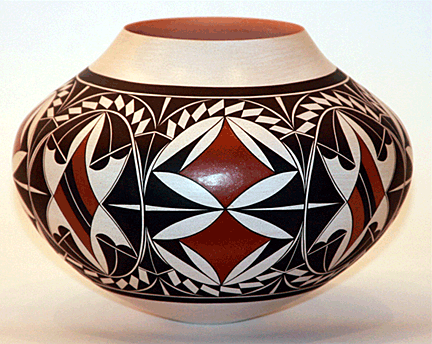 Native
American arrowheads have long been collected by scavengers at known
settlement and battle sites. But since the turn of the 20th Century,
collectors desire to obtain just about any object made and used by the
tribes that lived throughout North America. And with the inauguration of
the National Museum to the American Indian in Washington, DC., awareness
of these objects is at an all-time high. Native
American arrowheads have long been collected by scavengers at known
settlement and battle sites. But since the turn of the 20th Century,
collectors desire to obtain just about any object made and used by the
tribes that lived throughout North America. And with the inauguration of
the National Museum to the American Indian in Washington, DC., awareness
of these objects is at an all-time high.
No matter what form Native American artifacts take, collecting them
seems to be booming. Native American art combines age-old tradition with
innovation and talent, resulting in a variety of art forms for
collectors of all levels. Baskets, weavings, and pottery, many with
centuries-old influences, incorporate a natural spirit with timeless
appeal.
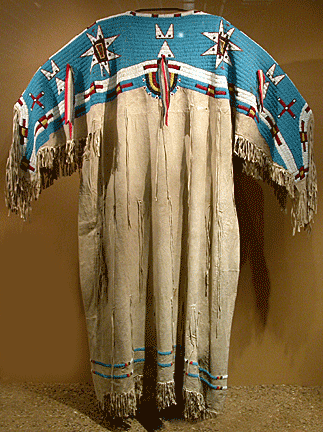 Why
are so many collectors, both amateur and professional, being drawn to
Native American artifacts? Two words–investment value–sum it up.
Appreciation, both artistic and financial, has never been stronger.
Certain types of pieces–pottery, baskets, blankets and rugs–have risen
in value significantly, doubling or tripling in value over the last
decade. Why
are so many collectors, both amateur and professional, being drawn to
Native American artifacts? Two words–investment value–sum it up.
Appreciation, both artistic and financial, has never been stronger.
Certain types of pieces–pottery, baskets, blankets and rugs–have risen
in value significantly, doubling or tripling in value over the last
decade.
Generally, collecting Native American artifacts falls into two distinct
categories. On the one hand, everyday objects like baskets, jars,
weavings, and clothing, usually decorated with some sort of artistic
design, may not be considered art, but antiques or collectibles. On the
other hand, art collectors gather unblemished rugs, jars, and baskets as
art forms. Pricing for the former is more reasonable, while pricing for
the latter can be stratospheric.
While useful items such as pots, blankets, snowshoes and mocassins may
have been originally used by Native Americans, they created large
baskets, rugs, and exceptional pots specifically for the collector
market. This falls in the realm of folk art, which crosses a mysterious
dividing line between antiques and art.
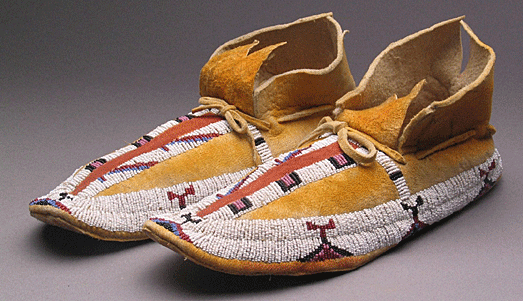
Laws Governing Collecting Native American Artifacts
Unlike other antique collecting, laws govern the collecting of Native
American artifacts. The Native American Graves Protection and
Repatriation Act (NAGPRA) is the main federal law, passed in 1990, that
provides a process for museums and federal agencies to return certain
Native American "cultural items"–human remains, funerary objects, sacred
objects, or objects of cultural patrimony–to lineal descendants or
Indian tribes.
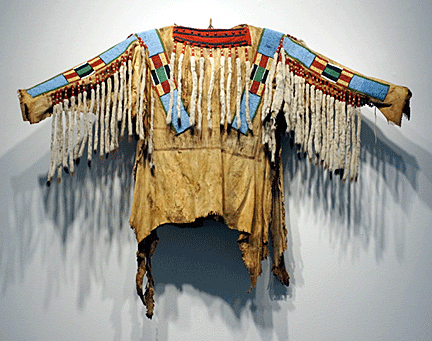 The
law, however, also forbids the buying and selling of these particular
objects, which is where it applies to individual collectors. While its
legal for people to own such objects, it’s illegal to sell certain ones
that don't qualify under the NAGPRA’s definition of cultural items. The
law, however, also forbids the buying and selling of these particular
objects, which is where it applies to individual collectors. While its
legal for people to own such objects, it’s illegal to sell certain ones
that don't qualify under the NAGPRA’s definition of cultural items.
A series of laws passed in 1906, 1966, 1979, and 1992 forbid the taking
of Native American artifacts from federal land, including national
forests, parks and Bureau of Land Management land, unless granted a
permit to do so. Over the years, states have passed their own laws that
restrict the taking of Native American objects from state land, echoing
the federal laws. There are also laws that deal with pre-Columbian art
and taking native works out of other countries. Under these laws, those
who dig up artifacts from federal or state lands can be fined hundreds
of thousands of dollars and can also be prosecuted and sent to jail.
And if a collector knowingly or unknowingly purchases these illegally
excavated objects, federal or state officials could seize them without
giving any financial compensation.
Acquiring Native American Artifacts
So how can collectors acquire Native American artifacts? Purchasing them
from shops or galleries and from special shows seems to be the primary
way. But whatever the method, collectors should buy what they like, what
fits their budgets, and what seems to be backed up by a documented
provenance.
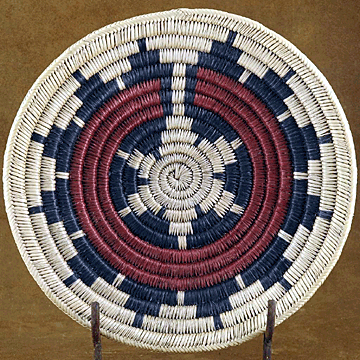 t’s
important to deal with reputable dealers. If a dealer can't tell a
collector where an object came from and how he or she acquired it, the
collector shouldn’t buy it. It’s also important to see the piece in
person as each piece is unique. t’s
important to deal with reputable dealers. If a dealer can't tell a
collector where an object came from and how he or she acquired it, the
collector shouldn’t buy it. It’s also important to see the piece in
person as each piece is unique.
Unfortunately, pieces from the Native American graves tend to be the
best ones. Native Americans buried their better pieces in graves, so
they’re often protected from use and tend to survive in a more complete
state. One way to distinguish a grave pot or jar is to look for a "kill
hole," which the potter made in it when it was buried in order to
release the spirit from it.
Types of Articles to Collect
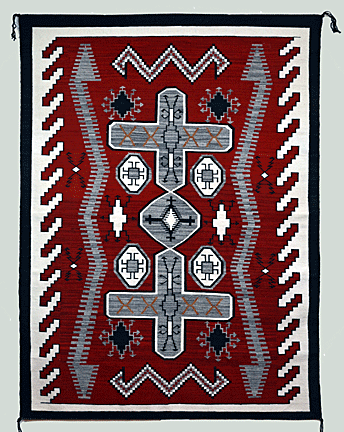 Baskets
have has always been a leading category in Native American craft
collecting. Their appeal is enduring. As one of the earliest art forms,
dating back at least 10,000 years, Native Americans used them primarily
for utilitarian purposes, as well as religious, and, later, financial
reasons. Baskets
have has always been a leading category in Native American craft
collecting. Their appeal is enduring. As one of the earliest art forms,
dating back at least 10,000 years, Native Americans used them primarily
for utilitarian purposes, as well as religious, and, later, financial
reasons.
From the looms of Navajo weavers came wool rugs and blankets comparable
to the world’s finest weavings. Mostly women wove these on upright
looms, which they made themselves. The transition from producing
weavings for personal use to producing them for sale occurred when
reservation trading posts created new markets for them a little over 100
years ago, beginning the development of the modern Navajo rug.
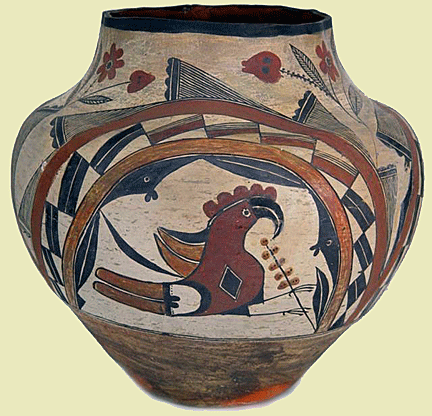 Collectors
also enjoy collecting Native American pottery. To be considered a
"traditional" piece of pottery, the potter must have dug the pot’s clay
out of the ground and constructed it entirely by hand without the use of
a potter's wheel. He or she then carved or scratched designs into the
surface of a dried piece before it’s fired. Potters also applied designs
with "slip," a thin mixture of water and clay colored with ground
minerals or plant materials. Many Navajo potters coated their pieces
with pine pitch, giving them a lustrous finish. Traditional Native
American pottery is not glazed. If a pot has a shiny surface, then it
had been polished by rubbing the surface of the piece with smooth
stones. Often potters incorporated several of these techniques on a
single piece. Collectors
also enjoy collecting Native American pottery. To be considered a
"traditional" piece of pottery, the potter must have dug the pot’s clay
out of the ground and constructed it entirely by hand without the use of
a potter's wheel. He or she then carved or scratched designs into the
surface of a dried piece before it’s fired. Potters also applied designs
with "slip," a thin mixture of water and clay colored with ground
minerals or plant materials. Many Navajo potters coated their pieces
with pine pitch, giving them a lustrous finish. Traditional Native
American pottery is not glazed. If a pot has a shiny surface, then it
had been polished by rubbing the surface of the piece with smooth
stones. Often potters incorporated several of these techniques on a
single piece.
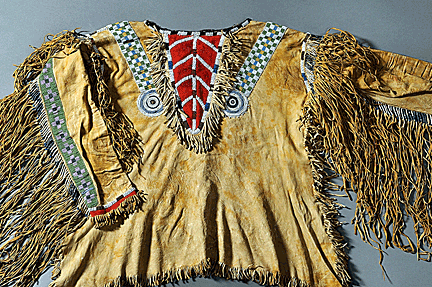 When
a person speaks of Native American art, the first thing that often comes
to mind is beadwork. Although glass beads weren’t available until
Europeans used them in trade, they quickly became a traditional form of
embellishment for a variety of everyday items and ceremonial objects.
Distinctive types of beadwork distinguish different regions of the
country and subtle differences of style from different tribes within
each region. When
a person speaks of Native American art, the first thing that often comes
to mind is beadwork. Although glass beads weren’t available until
Europeans used them in trade, they quickly became a traditional form of
embellishment for a variety of everyday items and ceremonial objects.
Distinctive types of beadwork distinguish different regions of the
country and subtle differences of style from different tribes within
each region.
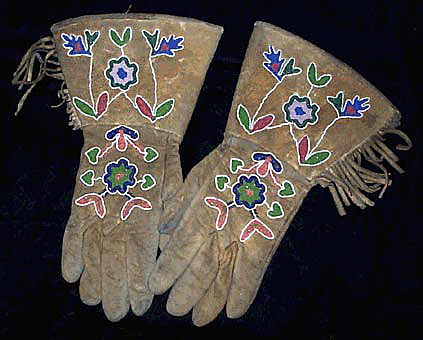 Native
American women applied beads to fabric or hide in different ways. The
most common way was the lazy stitch, in which they sewed the beads in
even rows with different color combinations used to create geometric
designs. They also applied beads using contour stitches in which they
sewed the rows of beads in curvilinear patterns with varying numbers of
beads used to fill spaces and create curved designs such as flowers. And
they stitched beads into tubular strips to finish the edges of designs
and to cover the handles of rattles or the stems of pipes. Tribes in the
Northeastern United States used raised beadwork, which created
three-dimensional designs rising up from the surface of the fabric. Native
American women applied beads to fabric or hide in different ways. The
most common way was the lazy stitch, in which they sewed the beads in
even rows with different color combinations used to create geometric
designs. They also applied beads using contour stitches in which they
sewed the rows of beads in curvilinear patterns with varying numbers of
beads used to fill spaces and create curved designs such as flowers. And
they stitched beads into tubular strips to finish the edges of designs
and to cover the handles of rattles or the stems of pipes. Tribes in the
Northeastern United States used raised beadwork, which created
three-dimensional designs rising up from the surface of the fabric.
The Market for Native American Memorabilia
Today, high prices exclude many collectors from collecting Native
American artifacts because it has become trendy to do so. Often,
decorators set these trends–they recognized the beauty and simplicity of
Native American art as early as 1890. Pieces that once sold for $50 now
fetch $5,000. In fact, prices on Indian artifacts above $5,000 are
commonplace, with some of the rarest objects selling routinely for half
a million.
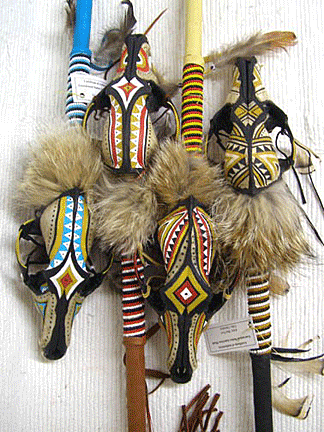 "Artful"
or "visual" objects are those to which collectors pay the greatest
attention and for which they pay the highest prices. Those interested in
antique Indian art insist that objects be in excellent condition and
have a relatively early date of manufacture. Ironically, these
considerations leave lots of beautiful but "not quite perfect" examples
to choose from for those who have a limited budget for collecting. "Artful"
or "visual" objects are those to which collectors pay the greatest
attention and for which they pay the highest prices. Those interested in
antique Indian art insist that objects be in excellent condition and
have a relatively early date of manufacture. Ironically, these
considerations leave lots of beautiful but "not quite perfect" examples
to choose from for those who have a limited budget for collecting.
Few collectors consider everyday items such as fire-making equipment,
hide-tanning implements, packing cases, saddlery, clothing, hunting
gear, stone tools, food-preparation utensils, snowshoes, and animal
traps that may not be artistic. They may, however, have beautiful forms,
reveal fascinating uses of raw materials, show unusual construction
techniques or exemplify a truly ingenious adaptation or variation
resulting from centuries of trial and perfection. It’s objects like
these that can lead to a better understanding of the everyday life of
living in a tipi camp, wigwam village or pueblo. And more so than with
other antiques, collecting Native American artifacts helps a collector
understand more about the peoples and cultures that produced them.
Learning more about Native American artifacts is essential to forming a
good collection and helps collectors buy with confidence. Some probe
deeper into tribal histories, customs, artistic symbols and the profound
spiritual significance of tribal art to the Native American.
To read
more of my articles, please
visit
my Web site.
< Back
to Collectibles Archives
Next
Article >
|
